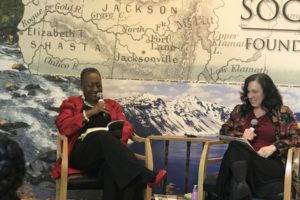Every morning I document the numbers of COVID-19 cases in the United States via Worldometer, a site that gets its numbers from state health departments, which obtain theirs from daily county reports. I started this ritual in mid-March because I wanted to see the changes in real time, not just as reported on television.
Historians like myself piece stories of the past together from primary sources: the documents, photographs, artifacts or interviews that tell us what happened, how and why. We evaluate sources according to type, some for information, others to understand the human experience.
I have pieced together some history about the 1918 influenza at Vancouver Barracks from Public Health reports that included the prevalence of disease on military posts as reported by state health departments, local newspaper articles and city council meeting minutes. These reports documented the rise and fall of influenza in Vancouver, from no reported cases between July and September 1918 to 593 in late October. Early that month, Vancouver’s City Council, first in the state, halted all public gatherings, including schools and churches. At Vancouver Barracks that fall, so many more people died than usual that the Army built a new morgue.
We know from 1918 that millions upon millions died from an especially virulent flu that often turned into pneumonia. We also know that it settled down briefly, but returned in mutated from, hitting stronger and harder than before. We know that when it came to Washington State, our leaders acted quickly.
When I began my COVID-19 count on March 18, Washington State had just over 1,000 diagnosed cases. Nationwide, 117 people had died of COVID-19, nearly half (55) in our state. By April 1, a week after Governor Jay Inslee issued the “Stay Home” order, I recorded 5,482 documented cases and 225 dead in Washington. Six of the deaths were from Clark County. As I write a month later, Washington has just over 12,000 diagnosed cases and 652 dead from COVID-19. Nineteen have died in Clark County. Nearly 1 million are diagnosed nationwide.

